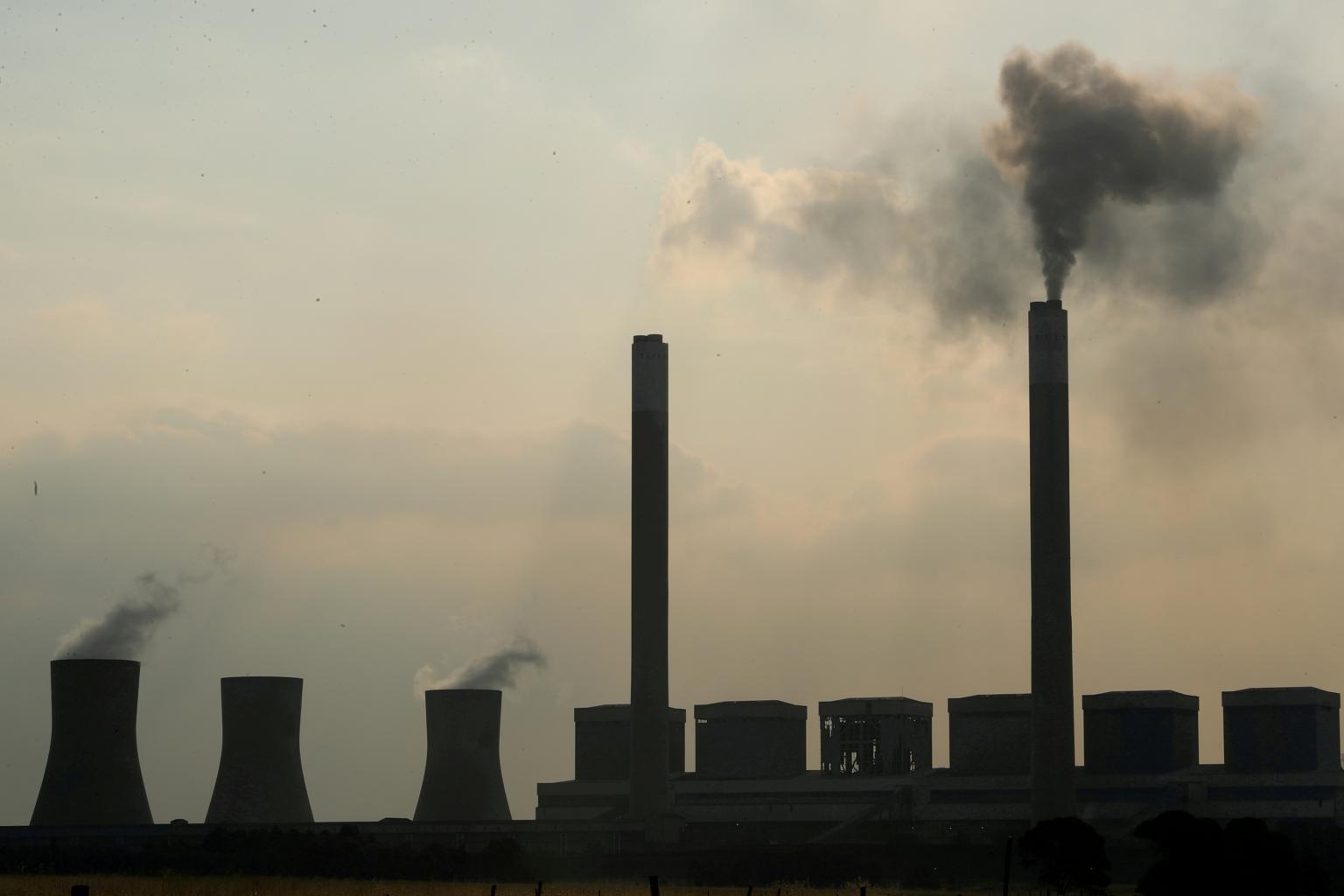White House considering nearly doubling Obama's climate pledge
Sign up now: Get ST's newsletters delivered to your inbox

Cutting US greenhouse gas emissions in half would require broad action to clamp down on planet-warming pollution.
PHOTO: REUTERS
Follow topic:
WASHINGTON (BLOOMBERG) - The White House is considering a pledge to cut United States greenhouse gas emissions by 50 per cent or more by the end of the decade, according to people familiar with the deliberations.
It is a target that would nearly double the country's previous commitment and require dramatic changes in the power, transportation and other sectors.
The emissions-reduction goal, which is still being developed and subject to change, is part of a White House push to encourage worldwide action to keep average global temperature from rising more than 1.5 deg C from pre-industrial levels, according to the sources.
The administration of US President Joe Biden is expected to unveil the target before a climate summit later this month.
Targets under discussion for the US pledge include a range of 48 per cent to 50 per cent reduction in greenhouse gas emissions from 2005 levels by 2030, according to one person familiar with the deliberations.
Another person said the administration, at the urging of environmentalists, is considering an even steeper 53 per cent reduction. Both asked not to be identified in describing private communications.
The White House declined to comment on the specific numbers, but one official said the administration plans a "whole-of-government" approach to the target, with agencies considering opportunities across the federal government on standard setting, clean energy investments and resilient infrastructure plans.
By comparison, under former president Barack Obama, the US promised to reduce planet-warming emissions from 26 per cent to 28 per cent below 2005 levels by 2025. Signatories to the 2015 Paris climate accord are scheduled to reconvene in November in Scotland and pledge reductions through 2030.
The administration is fashioning the aggressive target as it seeks to rebuild trust with nations wary after former president Donald Trump withdrew from the Paris agreement and dismantled domestic policies key to driving the country's promised emissions cuts.
"Countries around the world are looking to see what the US is going to do with this and will it come with something that's both ambitious and credible," said Mr David Waskow, director of the World Resources Institute's International Climate Initiative.
"Other countries in the international community in general are looking to see how this can be something that takes flight and will continue past any particular political moment in time."
Cutting US greenhouse gas emissions in half would require broad action to clamp down on planet-warming pollution from power plants, automobiles, oil wells and agriculture.
The US currently gets about 40 per cent of its electricity from nuclear and renewables, but would have to double its carbon-free power to 80 per cent by 2030 to put the country on track to curb emissions enough to meet that new target, according to Ms Amanda Levin, a policy analyst for Natural Resources Defense Council.
The US would also need to aggressively shift broad swathes of the economy to run on electricity, especially cars, while improving efficiency and reducing energy waste at all levels. Those efforts are key, but will happen more slowly than the transformation of the power sector that is already well under way.
Environmentalists are lobbying the White House to include an explicit commitment for a 40 per cent reduction in releases of methane, a particularly potent greenhouse gas.
Just finding and fixing methane leaks at oil and gas facilities could allow the US to cut emissions equivalent to taking 140 million gasoline-powered cars off the road, said Ms Sarah Smith with the Clean Air Task Force.
The US is on its way to satisfying the Obama-era target, having pared emissions 14 per cent below 2005 levels in 2019, according to government data.
The reductions were even sharper in 2020 - 23.8 per cent lower than 2005 levels - but only as pandemic-related quarantines spurred a dramatic drop in air and road travel.
When the Paris climate accord was inked, countries pledged to try and keep global warming well below 2 deg C. But researchers now believe a 1.5 degree cap is required to avoid some of the most catastrophic consequences of climate change.
A strong target will help underscore the US commitment to combating climate change while encouraging robust action from other nations, said Dr Rachel Cleetus, a climate and energy policy director with the Union of Concerned Scientists.
"The US has a lot of ground to catch up on, so the first order of business is to put a robust number on the table that can also help catalyse higher ambition," Dr Cleetus said.
Major environmental groups have coalesced behind a 50 per cent emissions reduction. That figure hits the sweet spot by being both ambitious and achievable, said Mr Mark Brownstein, senior vice-president of energy at the Environmental Defense Fund, which made its case for that 50 per cent target in a 32-page report it provided the administration last month.
"Coming in with a lowball number simply because you know you can achieve it is not leadership if it doesn't meet the urgency of the moment, but pushing yourself to meet the urgency of the moment with a bunch of fluffy commitments that no one believes you're ever going to achieve doesn't meet the moment either," Mr Brownstein said.
Environmental activists and analysts have published an array of reports in recent months outlining how potential mixes of regulations, clean energy incentives and voluntary action can help cut US emissions in half by 2030.
The figure is expected to be unveiled by the Biden administration before the April 22 to 23 climate summit hosted by the White House.
The White House has invited the leaders of 40 nations, including some of the biggest polluters and smaller, less wealthy nations that are especially vulnerable to the changes brought on by a warming planet.

